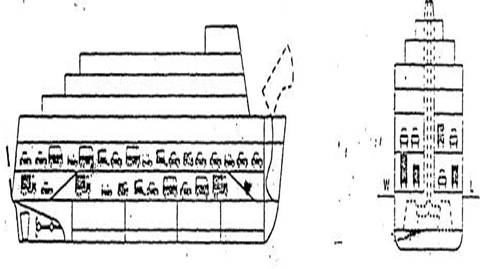Question
With reference to Roll-on Roll-off ferries:
Describe the problem of free surface effect;
Explain how it is intended that the water
should be cleared from car or cargo decks:
Describe possible methods for improving the
stability and survivability of these vessels.
SOLUTION.
(a) RO-RO
ferries allow vehicles to be driven through the ship from stem to stern.
Entrance to the hull is provided by doors, either at bow and stern, or at the
stern
Hence. RO-RO's
are vulnerable because:
Low freeboard to vehicle deck
No transverse watertight sub-division on the vehick--decks
Large external openings (bow and stern doors) below
freeboard deck
(b) If any slack water were to get onto the vehicle
deck, the huge free surface effect could have catastrophic consequences
(capsize can be very rapid).
Any such water must be drained as quickly as possible,
therefore large capacity scuppers are fitted.
Large scuppers are less prone to blockage, and should
cope with-any leakage through the door seals, and the large volumes of water
from the drencher fire fighting system normally fined,
(c) At
present there is a strong lobby to improve the survivability of these vessels
by such design methods as:
Increasing buoyancy/reserve buoyancy by fitting sponsons
Fit only stern door with drive around load/unload
Fit transverse retractable sub-division
doors/bulkheads
Fit inflatable buoyancy bags
Complying fully with present passenger ship
regulations
Fit additional watertight door behind the forward ramp
